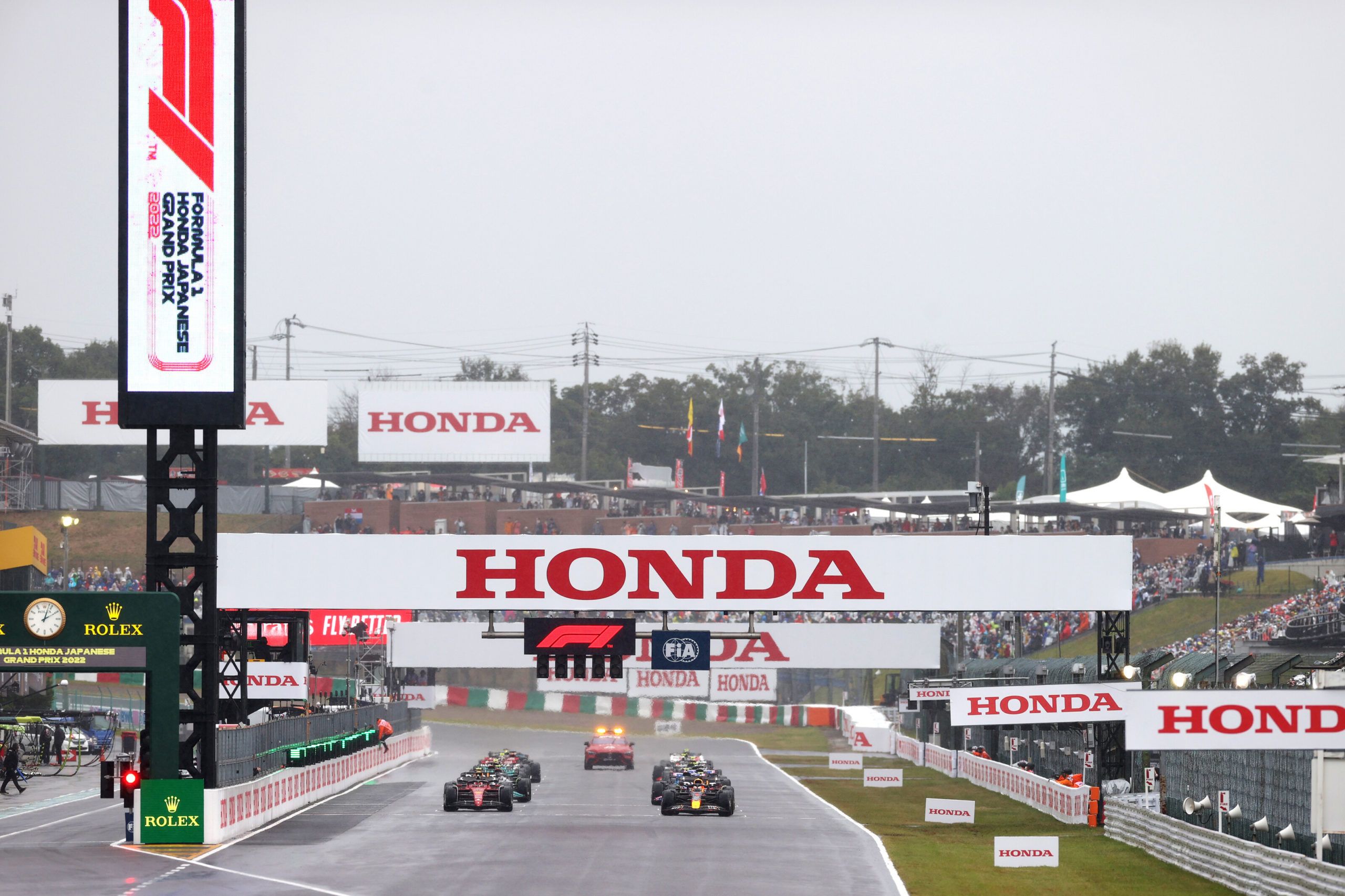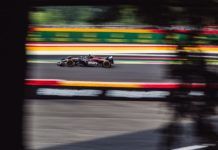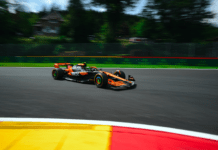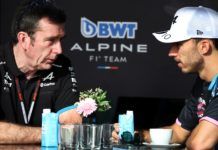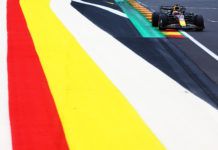The FIA has shared a detailed report into the happenings in F1 Japanese GP and has multiple suggestions into what can be done.
The FIA has shared a quick detailed report into the happenings in F1 Japanese GP at Suzuka with the crane incident. The crash of Ferrari’s Carlos Sainz along with stoppage of Williams’ Alexander Albon caused a safety car period in treacherous conditions.
The race was eventually red-flagged but by that time, the crane came onto the track to recover the cars of Sainz and Albon. The FIA has given a timeline and even the speed of cars when passing the recovery moment, along with that of Pierre Gasly.
The Frenchman was stuck with the advertising board and was forced to pit which set him far behind in the order. By the time he arrived at the scene, he was surprised to find a crane on track especially due to the death of Jules Bianchi at the same venue.
Gasly oversped for which he was handed a penalty but his displeasure did not end there with several of his colleagues and team bosses also voicing their opinions. The review into the incident was immediately kicked-off after the grand prix.
The review is based on the letter from GPDA and their discussions with Mohammed Ben Sulayem along with GPDA director George Russell and Gasly, where the latter insisted to be involved in the process after he was severely affected by the incident.
The review panel had several from FIA departments which included Race Control, ROC, Safety, Operations and Technical and the process was looked over by the FIA Deputy President for Sport Robert Reid, who was in attendance in Suzuka.
The weather conditions, driver visibility, track situation was taken into consideration along with driver behaviour and the performance of the marshals and recovery vehicle operators also evaluated. The conclusion has been made into the happenings .
Here’s part of review from the FIA:
The review concluded that all FIA race procedures were followed. After the incident involving the Ferrari of Carlos Sainz at Turn 12, the track was neutralised with the Safety Car before marshals and recovery vehicles were deployed on track.
The review noted that in such conditions, a recovery vehicle should not be deployed unless all cars are aligned behind the Safety Car. Furthermore, marshals and recovery equipment would only be deployed whilst cars are on track (Safety Car periods) when the weather conditions and location of the cars to be recovered allow for a quick and safe intervention.
Given the track conditions and the overall visibility for drivers, marshals and recovery staff at the time, initially under a Safety Car followed by a Red Flag, and as efforts were focused on safe recovery, the AlphaTauri of Pierre Gasly in the Pit Lane was not immediately detected.
Race Control do not necessarily monitor all cars that may pit during Safety Car periods as they are more concerned about any area containing an incident and neutralising the field behind the Safety Car.
After his Pit Stop, Gasly rejoined the track and drove to his Safety Car delta time in an effort to catch the pack. When he reached the incident in Turn 12 for the second time, marshals were working with a crane on track.
Even though it is common practice to deploy recovery vehicles once a race has been neutralised, the review panel discussed whether the entry of the recovery vehicle at Suzuka to retrieve the stricken Ferrari of Carlos Sainz was premature given the prevailing conditions.
The review panel acknowledged that having recovery cranes on track at Suzuka during the weather conditions is a sensitive matter in view of the tragic incidents of the past. The panel determined that in hindsight, as the weather conditions were changing, it would have been prudent to have delayed the deployment of the recovery vehicles on track.
It was acknowledged that every effort should be made to perform an efficient and safe recovery of cars. A longer recovery period, in conditions such as those which prevailed in Suzuka, may result in a race suspension.
It was also acknowledged that while the Safety Car is used to neutralise a race, the FIA has control over the cars directly behind the Safety Car, but it does not have sufficient control over the cars that are elsewhere around the track.
Additional to the above, the FIA noted that the drivers have an obligation to slow down and adhere to the flag rules which Gasly failed to do so despite knowing about the crash of Sainz and Albon. The Frenchman duly showed regret about his actions.
The wet weather tyres were also questioned whether it is equipped enough in such conditions, with analysis ongoing between the FIA Technical Department and Pirelli. At the same time, there is a review into the positioning of advertisement boards and they are also checking into the drainage system.
In a nutshell, the FIA is implementing these rules from US GP onward:
- Information to be provided to the Teams by means of a message via the official messaging system and communicated via the FIA intercom system to notify teams that a recovery vehicle is on track with the obligation from the Teams to inform their Drivers.
- Development of a live VSC/SC monitoring window to display the status of all cars, on track, behind SC, in PITS to be used by Race Control and the ROC.
- Race Control Procedure Update to better define the allocation of tasks across the Race Control team (including delegation of monitoring tasks to ROC as required) under SC or VSC procedure. In specific relation to this review, the delegation of monitoring of cars entering the Pit Lane under SC conditions and the consequent length of the SC train.
- The FIA Race Director will hold a review of the incidents in Suzuka during the United States Grand Prix Drivers’ Briefing to explain what solutions the FIA plans to introduce to avoid a repeat of the situation in the future and to remind the Drivers of the rules relating to Safety Cars and Red Flags.
- Dynamic VSC: implementation of a new function that would change the delta speed required for the driver to follow before and in the sectors where there is an incident, this would aid the drivers to know where incidents have been declared.
- In conjunction with the teams, a review of penalty precedents for drivers not respecting the rules relating to Yellow, Double Yellow, VSC and SC conditions will take place.
- Assessment of the current application of advertising boards, their construction, location and materials used to avoid the potential for them to being torn off and thrown on track.
In addition to the above, the FIA has noted that Neils Wittich will remain as the race director for the rest of the 2022 season in Mexico, Brazil and Abu Dhabi, with Eduardo Freitas’ term for this year ending at Suzuka.
Also, the Article 6.5 of the F1 Sporting Regulation will be revisited with a view of having more clarity in relation to the race time limit and the points distribution after confusion about the full points at the end of the Suzuka race to determine the title winner.
Here’s the full FIA report: https://www.fia.com/sites/default/files/2022_f1_japanese_gp_car_recovery_review_.pdf
Here’s F1 drivers on cost cap saga
Here’s FIA on Porsche plus cost cap and more
Here’s news on launch of F1 Arcade
Here’s Zak Brown on letter to FIA about cost cap
Here’s Pierre Gasly and co on tractor incident
Here’s FIA on thorough review

